UNESCO's New Wonders Of The World
By Delords - Saturday, September 1, 2012
Every summer, UNESCO names new cultural and natural wonders to its World Heritage List for their outstanding universal value. It’s a way to raise awareness of the preservation of places important to mankind, but also drives tourism and brings fascinating places to the attention of travelers wondering where to go next. This year’s crop of new wonders — some obscure, some already famous — spans the globe and suggests the range of human experience and achievement.
Check out the list of new wonders, but be warned: you may have another dream trip to add to your own list.
Rock Islands Southern Lagoon, Palau
This gorgeous lagoon counts 445 uninhabited limestone, volcanic-origin islands, some in the shape of mushrooms, over 247,000 acres. It represents the world’s greatest collection of marine lakes (seawater lakes separated from the ocean) — and also boasts a reef system with more than 385 species of coral. Human traces stretch back more than 3,000 years, including 17th- and 18th-century stoneworking villages abandoned due to climate change and population pressure on the fragile ecosystem.
Lena Pillars Nature Park, Russia
The giant stone colonnades of Lena Pillars Nature Park line the banks of the Lena River in the Sakha Republic, also known as Yakutia. Isolated from each other, the pillars soar to heights of 100 meters or more than 328 feet, and are also rich in Cambrian fossils. They formed by freeze-thaw action over the millennia due to the area’s extreme changes in temperatures.
Bali Province’s Subak System, Indonesia
Bali won points with UNESCO this year not for its beaches but for its inland farming regions, specifically five rice terraces and connected water temples that make up a water management and irrigation system of subaks (canals). This setup dates back to the ninth century and includes the Royal Water Temple of Pura Taman. The subak system is itself a philosophical concept harmonizing the spiritual, natural, and built world, and represents the exchange of ideas between Bali and India. Locals say it’s a major reason why Balinese rice growers are among the most successful in Indonesia.
Margravial Opera House, Bayreuth, Germany
A fantastic model of German Baroque, the 500-seat Margravial Opera House was commissioned by Margravine Wilhelmine in the mid-1700s. Designed by architect Giuseppe Galli Bibiena, complete with paintings and intricate carvings, it paved the way for the grand public operas that proliferated across Europe a century later. In 2013, the theater will host events for the 200th anniversary of the birth of German composer Richard Wagner.
Landscape of Grand Pré, Canada
The archaeological remains in this bucolic setting testify to hardy European farmers who used dykes and the aboiteau wooden sluice system, a labor-intensive method that prevented saltwater tides from flooding the Pré marshland of Nova Scotia — one of the world’s most extreme tidal regions. The preserved area is more than 3,200 acres and was first developed by 17th-century Acadians of what was New France.
Rio de Janeiro’s Carioca Landscapes
Between the Mountain and the Sea,
Brazil
The most famous of the wonders chosen by UNESCO in 2012, the Carioca Landscapes is crowned by the 1930s Art Deco statue of Christ atop Corcovado. It gazes down at the native Atlantic forest growing in Tijuca National Park — as well as Rio’s see-and-be-seen beaches.
Sangha Trinational, Cameroon,
Central African Republic, Congo
These untouched wilds of tropical Africa stretch through adjacent national parks in three different countries — Cameroon, the Central African Republic, and the Congo — in the northwestern Congo River Basin. The total covers more than 1.85 million acres. Waters here teem with giant tigerfish and Nile crocodiles, while on land, elephants, gorillas, and chimpanzees roam the forests along with many endangered African species.
Site of Xanadu, China
Xanadu was a real place north of China’s Great Wall, first described to westerners by Italian explorer Marco Polo. As the capital of Kublai Khan’s empire, Xanadu was designed to combine the Mongolian nomadic, warrior culture with the sophistication of the native Han Chinese and was planned using feng shui principles in 1256. The city’s role as a religious center helped spread Tibetan Buddhism through northeast Asia. Today, remains of temples, palaces, and tombs spread over nearly 62,000 acres.
Pearling, Testimony of an Island Economy,
Bahrain
The Persian Gulf nations now bring to mind skyscrapers and air-conditioned shopping malls, but long before oil was discovered, pearl diving was the region’s main source of wealth. Seventeen buildings and the Qal’at Bu Mahir fortress complex in Muharraq City make up this site, along with three oyster beds and a section of the seashore. Visitors will find traditional shops, a mosque, and the former residences of merchants made rich by the pearl trade, a mainstay from the second century until the 1930s, when the Japanese invented cultured pearls.
Lakes of Ounianga, Chad
Saline and freshwater lakes are scattered within this portion of the Sahara desert to dramatic effect. There are four lakes in Ounianga Kebir, the largest being Yoan at roughly 885 acres and a depth of more than 88 feet. High in salt content, it supports primarily algae. Ounianga Serir is the other section, with 14 fauna-filled freshwater lakes amid sand dunes.
See more New Wonders of the World.
Check out the list of new wonders, but be warned: you may have another dream trip to add to your own list.
Rock Islands Southern Lagoon, Palau
This gorgeous lagoon counts 445 uninhabited limestone, volcanic-origin islands, some in the shape of mushrooms, over 247,000 acres. It represents the world’s greatest collection of marine lakes (seawater lakes separated from the ocean) — and also boasts a reef system with more than 385 species of coral. Human traces stretch back more than 3,000 years, including 17th- and 18th-century stoneworking villages abandoned due to climate change and population pressure on the fragile ecosystem.
Lena Pillars Nature Park, Russia
The giant stone colonnades of Lena Pillars Nature Park line the banks of the Lena River in the Sakha Republic, also known as Yakutia. Isolated from each other, the pillars soar to heights of 100 meters or more than 328 feet, and are also rich in Cambrian fossils. They formed by freeze-thaw action over the millennia due to the area’s extreme changes in temperatures.
Bali Province’s Subak System, Indonesia
Bali won points with UNESCO this year not for its beaches but for its inland farming regions, specifically five rice terraces and connected water temples that make up a water management and irrigation system of subaks (canals). This setup dates back to the ninth century and includes the Royal Water Temple of Pura Taman. The subak system is itself a philosophical concept harmonizing the spiritual, natural, and built world, and represents the exchange of ideas between Bali and India. Locals say it’s a major reason why Balinese rice growers are among the most successful in Indonesia.
Margravial Opera House, Bayreuth, Germany
A fantastic model of German Baroque, the 500-seat Margravial Opera House was commissioned by Margravine Wilhelmine in the mid-1700s. Designed by architect Giuseppe Galli Bibiena, complete with paintings and intricate carvings, it paved the way for the grand public operas that proliferated across Europe a century later. In 2013, the theater will host events for the 200th anniversary of the birth of German composer Richard Wagner.
Landscape of Grand Pré, Canada
The archaeological remains in this bucolic setting testify to hardy European farmers who used dykes and the aboiteau wooden sluice system, a labor-intensive method that prevented saltwater tides from flooding the Pré marshland of Nova Scotia — one of the world’s most extreme tidal regions. The preserved area is more than 3,200 acres and was first developed by 17th-century Acadians of what was New France.
Rio de Janeiro’s Carioca Landscapes
Between the Mountain and the Sea,
Brazil
The most famous of the wonders chosen by UNESCO in 2012, the Carioca Landscapes is crowned by the 1930s Art Deco statue of Christ atop Corcovado. It gazes down at the native Atlantic forest growing in Tijuca National Park — as well as Rio’s see-and-be-seen beaches.
Sangha Trinational, Cameroon,
Central African Republic, Congo
These untouched wilds of tropical Africa stretch through adjacent national parks in three different countries — Cameroon, the Central African Republic, and the Congo — in the northwestern Congo River Basin. The total covers more than 1.85 million acres. Waters here teem with giant tigerfish and Nile crocodiles, while on land, elephants, gorillas, and chimpanzees roam the forests along with many endangered African species.
Site of Xanadu, China
Xanadu was a real place north of China’s Great Wall, first described to westerners by Italian explorer Marco Polo. As the capital of Kublai Khan’s empire, Xanadu was designed to combine the Mongolian nomadic, warrior culture with the sophistication of the native Han Chinese and was planned using feng shui principles in 1256. The city’s role as a religious center helped spread Tibetan Buddhism through northeast Asia. Today, remains of temples, palaces, and tombs spread over nearly 62,000 acres.
Pearling, Testimony of an Island Economy,
Bahrain
The Persian Gulf nations now bring to mind skyscrapers and air-conditioned shopping malls, but long before oil was discovered, pearl diving was the region’s main source of wealth. Seventeen buildings and the Qal’at Bu Mahir fortress complex in Muharraq City make up this site, along with three oyster beds and a section of the seashore. Visitors will find traditional shops, a mosque, and the former residences of merchants made rich by the pearl trade, a mainstay from the second century until the 1930s, when the Japanese invented cultured pearls.
Lakes of Ounianga, Chad
Saline and freshwater lakes are scattered within this portion of the Sahara desert to dramatic effect. There are four lakes in Ounianga Kebir, the largest being Yoan at roughly 885 acres and a depth of more than 88 feet. High in salt content, it supports primarily algae. Ounianga Serir is the other section, with 14 fauna-filled freshwater lakes amid sand dunes.
See more New Wonders of the World.
Follow our blog on Twitter, become a fan on Facebook. Stay updated via RSS









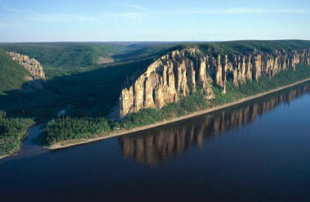

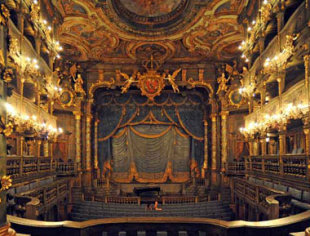
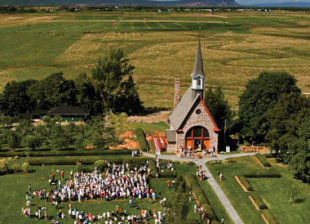

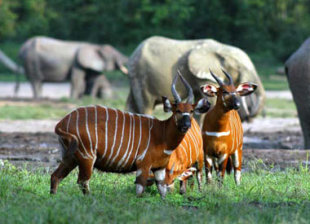


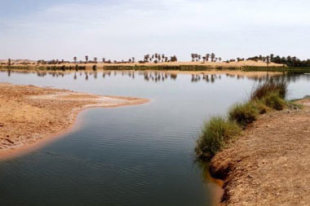




0 comments for "UNESCO's New Wonders Of The World"